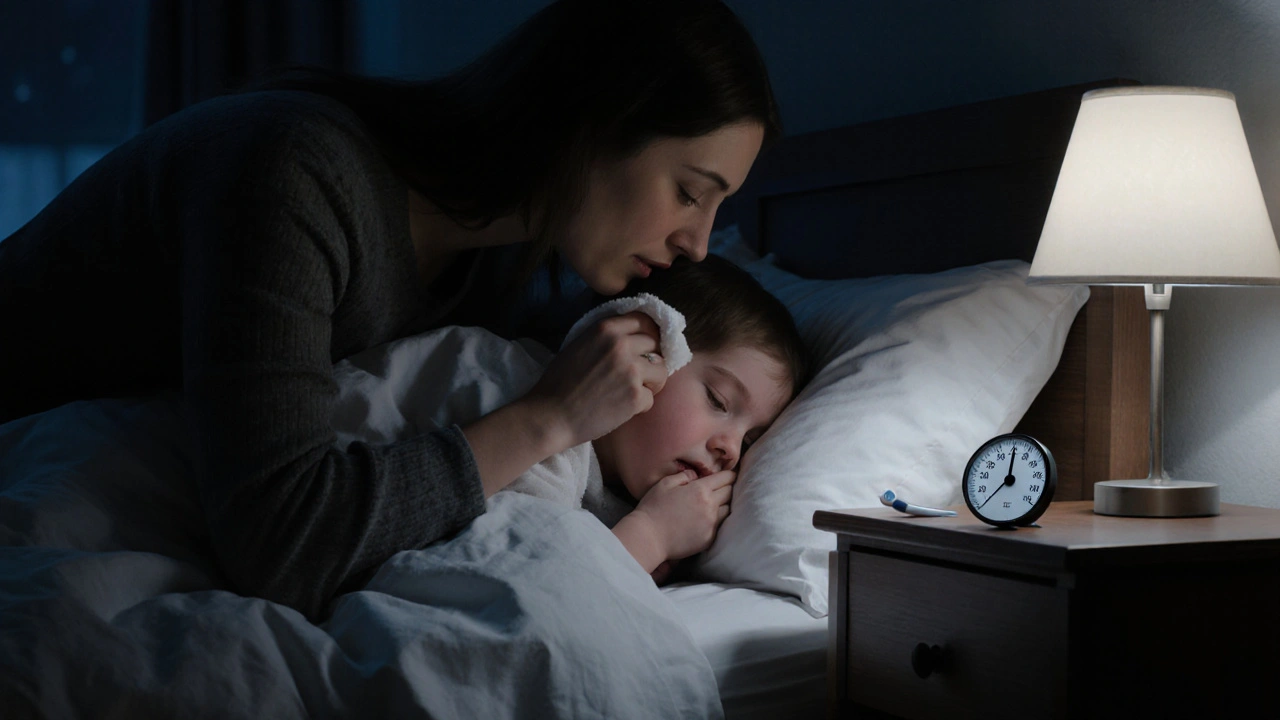Zánět středního ucha: příznaky, léčba a co dělat, když to bolí
When you feel a sharp, throbbing pain deep inside your ear, it’s often not just a passing discomfort—it’s likely zánět středního ucha, infekce v prostoru za tympanem, která vzniká, když se zadrží tekutina a rozmnoží se v ní bakterie nebo viry. Also known as otitis media, it’s one of the most common reasons parents bring kids to the ORL clinic—and adults too. This isn’t just about earache. It’s about trouble sleeping, muffled hearing, fever, and sometimes even dizziness. Many think it’s just a side effect of a cold, but it’s a separate condition that needs attention.
Dětský zánět ucha, častější u malých dětí kvůli kratšímu a vodorovnějšímu ušnímu kanálu a nezralému imunitnímu systému often comes after a runny nose or cough. The Eustachian tube, which connects the middle ear to the throat, gets blocked, pressure builds up, and fluid turns into a breeding ground for germs. In adults, it’s less common but still happens—especially after flying, diving, or if you have chronic allergies or nasal polyps. Ušní infekce, obecný termín, který zahrnuje i zánět zvukovodu, ale zánět středního ucha se týká vnitřní části, ne vnějšího kanálu—and confusing the two can lead to wrong treatment.
What helps? Sometimes, the body clears it on its own in a few days. Warm compresses, rest, and painkillers like paracetamol can ease the pain. But if it lasts more than 48 hours, if you have a high fever, if fluid drains from the ear, or if your child is under two and seems unusually irritable—you need to see a doctor. Antibiotics aren’t always needed, but if the infection is bacterial, delaying treatment can lead to complications like hearing loss or even spread to nearby tissues. Otitis media, klinický název pro zánět středního ucha, který se používá i v české medicíně is diagnosed with an otoscope—no fancy tests needed. Just a quick look inside the ear.
Don’t ignore recurring ear pain. If it keeps coming back, especially in kids, it might mean your Eustachian tube isn’t working right, or you have underlying nasal issues. That’s when deeper evaluation—like hearing tests or nasal endoscopy—becomes important. Prevention matters too: avoid smoking around children, manage allergies, and don’t force nasal blowing too hard when you’re sick. Breastfeeding infants longer also reduces risk.
Below, you’ll find real, practical advice from patients who’ve been there: how to tell if it’s getting better, what home remedies actually work (and which ones don’t), when to skip the pharmacy and go straight to the doctor, and how to prevent it from coming back. No fluff. Just what you need to know to feel better—and stay that way.

Jak dlouho se léčí zánět ucha? Časový plán pro děti a dospělé
Zánět ucha se obvykle léčí 7-10 dní, ale doba zotavení závisí na typu infekce, věku a zdravotním stavu. Více o tom, jak rychle se zlepšíte a kdy je třeba jít k lékaři.

Jak se pozná zánět v uchu u dětí a dospělých - příznaky a kdy jít k lékaři
Zánět v uchu se projevuje bolestí, horečkou a ztrátou sluchu. Většinou vzniká po nachlazení, ale může být i důsledkem plavání. Včasná léčba předchází komplikacím. Zjistěte, jaké příznaky označují zánět středního ucha a kdy je nutné jít k lékaři.

Jak se pozná zánět ucha u dětí a dospělých - příznaky, které nelze přehlédnout
Zánět ucha se projevuje bolestí, ucpaností a poklesem sluchu. U dětí je často přehlížen - pláč, neklid nebo horečka mohou být jedinými příznaky. Včasná diagnóza a léčba zabrání komplikacím.